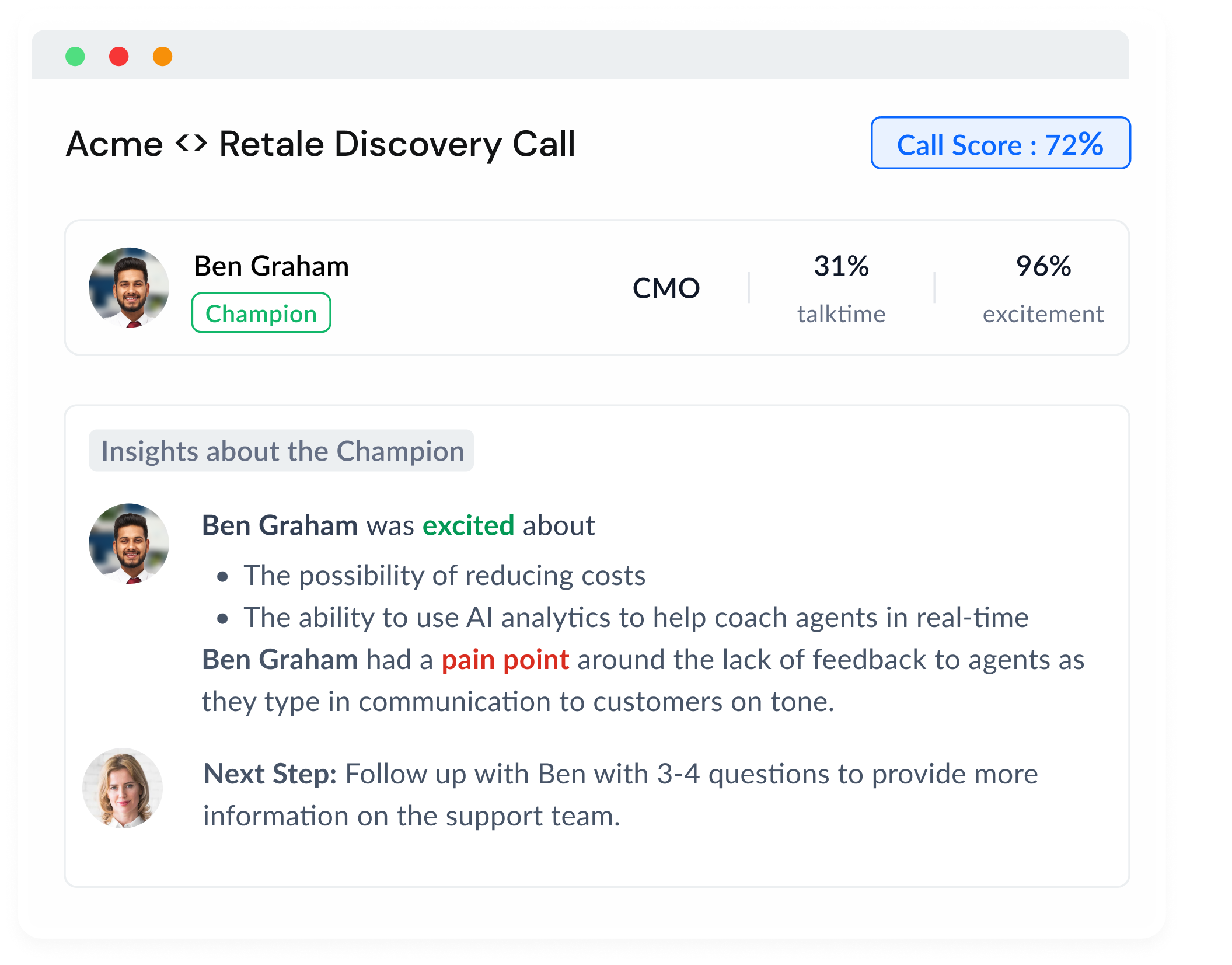If you’re a sales pro pushed into the world of virtual selling, you are likely here because it’s not quite the same thing, is it? Building rapport across the tables, looking into your prospects’ eye, being about to empathize with their pain-points, 1 on 1. Like humans were meant to do! There’s a lot that sales pros have been missing since virtual selling took over.
And it’s really not so much about getting your prospect to turn on the camera - that’s just the first step. It’s about:
- Building rapport with prospects on video calls
- Engaging prospects on video calls
- Getting prospects to participate on video calls
- Making your video calls and virtual selling more effective
- And, ultimately, the magic wand: Increasing sales through video calls
I hear you. It’s hard to communicate, build rapport and ultimately convince prospects in virtual environments, and it gets especially challenging with those who don't turn on their cameras.
As I’ve talked to 300+ salespeople since the pandemic (and Sybill, btw) hit the world, I’ve heard this problem voiced many times. I’ve also heard a few solutions that have seemed to work well for many in sales.
So the question is, how can you get your prospects to turn on their cameras on video call? And more important - how can you do it without appearing creepy?
If your entire sales process is based on audio calls and in-person meetings, this article may not be relevant fortfo you.
If you or your team have video calls Zooming (or, you know, Meet-ing or Team-ing) in the mix, read on!
Camera Off: Why’s It a Problem on Sales Video Calls?
Sales is about building relationships. We all know that.
The longer the sales cycle and the more complex the product/service, the more critical it is to build strong relationships with your buyers.
And it’s hard to build a relationship without seeing the other person. The smiles, the eye rolls, the body language, and the tone - everything helps in understanding the other person, their thought process and personality, and what excites them.
This is all integral to building a rapport with the prospect. And most of it is gone when there is no friendly face to engage with.
Experienced salespeople struggle because most of them are used to selling to buyers who they can see and understand based on their reactions, just as much as their words.
Even then, some of them are able to do just fine since they have a solid grounding in sales.
But newer reps struggle with that too - and it turns out that selling to a black wall on Zoom is a challenging task. I am, personally, not fond of it at all.
Why Do Folks Prefer to Keep Their Cameras Off Anyway?
There are strong reasons why some buyers (or anyone else, for that matter) don’t turn on their cameras at the first instant.
- Availability: They are taking the call while traveling or without access to a computer: most common among executives and senior leaders.
- Vulnerability: They don’t want to feel vulnerable. This is most common among buyers who are not as socially savvy, e.g. those not in sales or customer support. They may perceive video calls as just a hindrance to their personal space.
- Lack of perceived engagement: They feel that keeping the camera off allows them to be more comfortable. Isn’t it far more peaceful to take a call while you look away from time to time and can feed your dog on the side as well? The crux of the problem here is that they believe that the sales conversation won't be exciting or engaging enough.
But this is where things get interesting.
What Makes People Turn On Their Cameras For Some Videos Calls and Not Others
The same people who don't turn on their camera on sales calls, do turn it on in other scenarios.
- On a video call with their friends from school
- On a family call
- When in a community of folks they enjoy interacting within (like Thursday Night Sales, for example)
What do all of these have in common?
It’s simple. People love engaging on video with those they feel comfortable with, and conversations that are fun. When both the people and the conversation are exciting, we want to be an active part of it.
This insight could be the key for your prospects to turn on their camera on sales video calls with you.
Here's what I've heard from salespeople on how to get their prospects to turn on the camera on videos: All it needs is for you to be personable and make the conversation one worth having. Easy, isn’t it? :)
So, How Do Pros Get Prospects to Turn On Their Cameras on Sales Video Calls?
When proactive sales people see a problem, they solve it. And many folks that I’ve talked to have found solutions to this problem as well.
Here are four ways in which seasoned sales pros get their buyers to turn on the video in Zoom or other video calls:
Tip 1: Turn on your own camera
This one works like magic. Turn on your own camera and keep it on regardless of whether your prospect’s on video. After a while, people realize that you are friendly and want to engage with them on video, and they usually turn on their camera as well.
When you keep your camera on for a few minutes, it indicates that you are okay being vulnerable. You value a good conversation over the awkwardness of a situation, and you are comfortable in your own skin.
Vulnerability breeds trust and projects confidence. Both help remove barriers from the prospect’s mind.
Tip 2: Ask them to turn on their camera
The second most common way salespeople get their prospects to turn on their camera is by simply asking them. And it does work.
Some salespeople have told me that they fear that it might introduce awkwardness in the conversation, but many more have told me that it works.
Why does it work?
Asking politely is a sign of confidence and establishes that there is a certain way in which you do business. It also shows vulnerability - you are okay being told no.
Saying no is often harder than sitting in an awkward impasse. Most people relent.
Tip 3: Friendly tone, light content to start
Especially on the first call with a prospect, starting with some light-hearted banter might work well (it depends on their personality as well).
Small talk like football or the weather or something else that you typically do to establish basic rapport - the prospect would feel engaged and comfortable.
And that’s when the defenses come down, and your prospect warms up to you.
When you get to business in a couple of minutes, their cameras would already be on, and they would be open to new ideas.
Tip 4: Maintain dialogue and ask questions
Even if it’s a demo call, don’t make it a drab. Don’t make your prospect want to look away and check their email. Sure as hell, they’ll be switching off their cameras on you the minute your pitch makes them want to be elsewhere.
Ask questions. Have a conversation. Make it a two-way street.
When the prospect is engaged in the conversation and is feeling seen and heard, they’ll stay with you. On video calls, this typically means they’ll keep their camera on for the entire duration.
But wait, there’s more to it than getting prospects to turn on their camera
There’s far more to building a relationship with a prospective buyer than just having cameras on.
It’s just the beginning. You need to establish trust, credibility, and competence and make sure there’s a fit.
Deal closures take time. They take even more time during economic headwinds, buying committees, and objections rolling like thunder.
Make a positive start by having cameras on and attention and camaraderie, rapport and engagement flowing through your sales calls.














.png)





